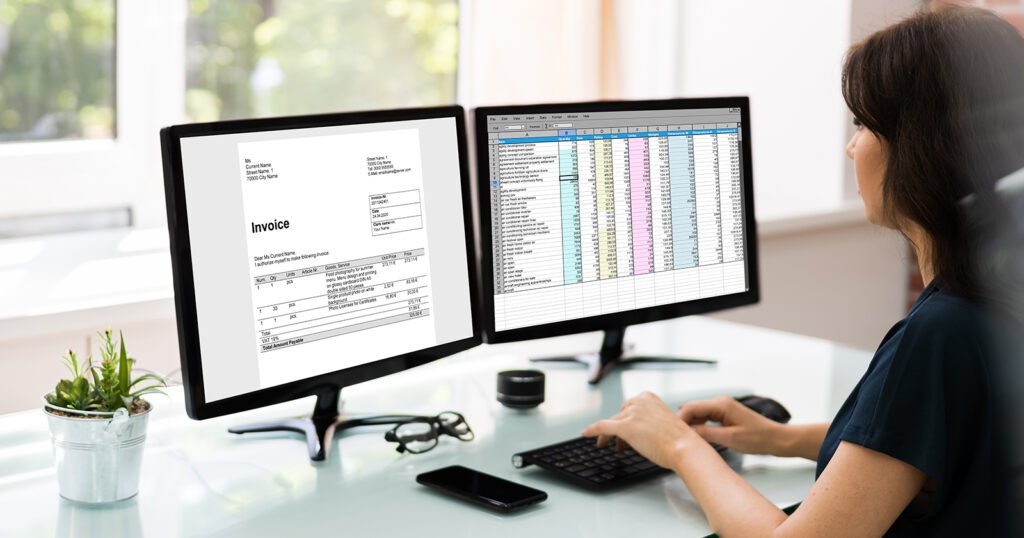In accounting, accounts are classified as assets, liabilities, equity, revenues or expenses. This is common knowledge for accountants. A topic that is less discussed are permanent accounts which are used to record transactions in companies.
The purpose of this article is to define permanent accounts and their importance along with providing examples so you can become an expert on this topic.

What Are Permanent Accounts in Accounting? (A Definition)
Permanent accounts have balances that carry over from one financial period to another. This means that the ending balance of a permanent account at the end of a financial period will be the opening balance of that permanent account at the beginning of the next financial period.
There is therefore never any need to close out a permanent account.
Due to the cumulative nature of permanent accounts, they are perfect to keep track of assets such as equipment or inventories, accounts receivables, loans, accounts payables or equity. They are considered to be long-term accounts.
Permanent accounts receive balances from temporary accounts once the temporary accounts are closed at the end of a financial period.
This allows for activities from temporary accounts to accumulate in the permanent accounts while allowing the temporary accounts to start fresh with a zero balance at the beginning of every financial period.
Read More:
Are Accountants in Demand? (Market Demand of Accountants)
Why is it Important to Understand Permanent Accounts?
Getting yourself familiar with permanent accounts and understanding them will improve your overall knowledge of the mechanism of accounting accounts. This will allow you to make sure the transactions you record are correctly and accurately classified.
This will ultimately lead to cleaner bookkeeping and save time to generate financial reports. For example, you wouldn’t want to use a temporary account to keep track of your cash account since your cash account needs to have its balance carried over from one period to another.
Knowing that permanent accounts exist for the purpose of accumulating balances, you would naturally classify cash in a permanent account right away.
Are Permanent Accounts in Accounting Ever Closed?
Permanent accounts do not need to be closed because their main purpose is to accumulate balances from one period to another. Think of the permanent accounts as a historical tracker of activities for a company.
If a company shuts down their operation, then as part of the wind down of the company, permanent accounts will be closed but other than that, permanent accounts are not closed contrary to temporary accounts.
Read More:
Income Summary Meaning in Accounting (Helpful Overview)
What is an Example of Permanent Accounts?

Let’s look at an example at Carl’s Construction Company (“CCC”). CCC’s financial year end is 31 December.
For the year ended 31 December 2022, CCC accumulated account receivables of $25,000 and account payables of $10,000. The company also ended the financial year with cash balances of $50,000.
During the year ended 31 December 2023, CCC collected $20,000 of its account receivables from 2022 and accumulated an additional $10,000 of account receivables in 2023.
As for its account payables, in 2023, CCC paid off the entirety of its account payables of 2022 and accumulated another $5,000 for 2023. The company collected $100,000 in cash during 2023 and paid $60,000 to cover various expenses.
What are the balances of the cash account, account receivables and account payables at 31 December 2023?
We know that cash, account receivables and account payables are all permanent accounts and therefore, they are not closed at the end of each financial year. This means, these accounts don’t start at zero at the beginning of the financial year 2023.
Instead, all balances from 31 December 2022 are carried over to 1 January 2023. The transactions from the financial year 2023 are then added to the account balances to arrive at the ending balance at 31 December 2023.
| Balance at 31 December 2022 and 1 January 2023 | Transactions during 2023 | Balance at 31 December 2023 and 1 January 2024 | |
| Cash | $50,000 | ($60,000) – 2023 cash paid $100,000 – 2023 cash collected | $90,000 |
| Account receivables | $25,000 | ($20,000) – 2022 AR collected $10,000 – 2023 AR accumulated | $15,000 |
| Account payables | $10,000 | ($10,000) – 2022 AP paid $5,000 – 2023 AP accumulated | $5,000 |
The Key Takeaways on Permanent Accounts
- Permanent accounts are balance sheet accounts, such as assets, liabilities and equity accounts.
- Permanent accounts have cumulative balances that are carried over from one financial period to another where the ending balance from the prior year is the opening balance of the next year.
- There is no need to close permanent accounts every financial period to allow for the transactions to accumulate over multiple periods.
Permanent Accounts in Accounting: Conclusion
Permanent accounts are important for businesses. They are key accounts used to track assets, liabilities of equity in a company. The nature of these accounts is cumulative and tracks historical data on what a company owns or owes.
Because of this, there is no need to close permanent accounts every financial period to allow the account to accumulate.
To allow permanent accounts to function properly, always remember to check that the ending balance of a permanent account during the prior financial period equals the opening balance of the permanent account in the next financial period.



